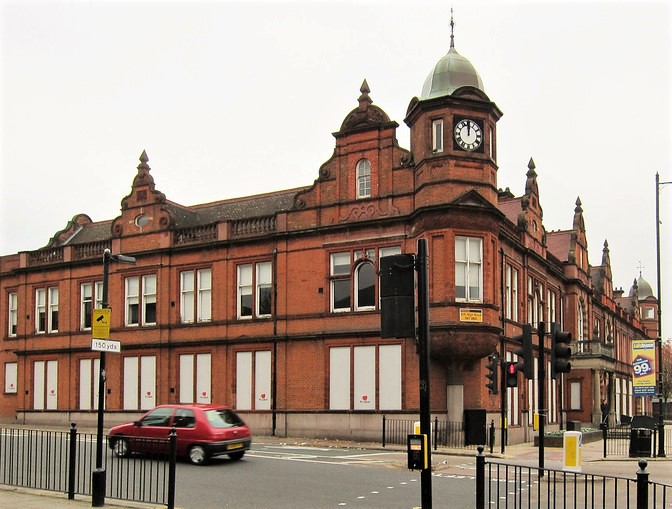Keeping premises safe during extreme times
Contents |
[edit] Introduction
During these times of risk and uncertainty, many businesses have been forced to close and move to a remote working, due to a concern for the health and wellbeing of staff and customers. This, however, can cause problems for business owners and stakeholders who may worry about the security risks of having an unoccupied premises.
This raises the question; how can you keep your commercial premises safe during the COVID-19 pandemic or other crises?
[edit] Key considerations
It is important to understand the potential weak points in business security before taking any additional action to protect commercial premises from potential risks such as crime or vandalism.
It is therefore recommended that, if possible, security checks are made and vulnerable areas are identified. This may include aspects such as:
- Checking perimeter security.
- Ensuring all alarms are active and functional.
- Checking locks on doors and windows.
It is important to remember that the level of security required will depend not only on the current measures being taken, but also the business itself including the industry, the size of the business and whether there are valuable items that remain in the premises whilst it is inaccessible. It is also beneficial to ensure that any electrical items are unplugged and that all waste is disposed of correctly. This helps reduce the risk and spread of fire.
[edit] Keeping the premises safe
There are number of security measures available that will help ensure that the premises remain protected.
The most obvious form of security is the traditional alarm system. Whilst many businesses will have these in place already, they can be invaluable when it comes to protecting against threats. They can also act as a visual deterrent to would be criminals, which is often sufficient for smaller businesses.
CCTV provides the additional benefit of being monitored remotely. This allows business owners to ensure that their premises are safe by making regular checks throughout the day which can help provide peace of mind.
Whilst these measures can be effective and are often enough to deter unauthorised visitors, some businesses, especially those who own larger amounts of land, can benefit from access control security. Security elements such as security gates and fences act a physical barrier and provide the strongest visual deterrent to a criminal.
It is recommended that most businesses have some form of access control security and perhaps a combination of multiple security systems to ensure that their business remains secure.
[edit] Returning to work
As people return to work, some businesses may be unprepared, creating a lack of confidence in employees who worry about adequate health and safety measures.
Some security options can help to reduce the risk for employees by reducing the need to manually operate or touch any access control measures in place. This also can continue to control the spread of germs, bacteria and of course, Coronavirus. Obviously anyone returning to work with the illness or even symptoms should stay at home but there can never be enough ‘just in case’ measures.
--Newgate
[edit] Related articles on Designing Buildings Wiki
Featured articles and news
Government consultations for the summer of 2025
A year of Labour, past and present consultations on the environment, the built environment, training and tax.
CMA competitiveness probe of major housing developers
100 million affordable housing contributions committed with further consultation published.
Homes England supports Greencore Homes
42 new build affordable sustainable homes in Oxfordshire.
Zero carbon social housing: unlocking brownfield potential
Seven ZEDpod strategies for brownfield housing success.
CIOB report; a blueprint for SDGs and the built environment
Pairing the Sustainable Development Goals with projects.
Types, tests, standards and fires relating to external cladding
Brief descriptions with an extensive list of fires for review.
Latest Build UK Building Safety Regime explainer published
Key elements in one short, now updated document.
UKGBC launch the UK Climate Resilience Roadmap
First guidance of its kind on direct climate impacts for the built environment and how it can adapt.
CLC Health, Safety and Wellbeing Strategy 2025
Launched by the Minister for Industry to look at fatalities on site, improving mental health and other issues.
One of the most impressive Victorian architects. Book review.
Common Assessment Standard now with building safety
New CAS update now includes mandatory building safety questions.
RTPI leader to become new CIOB Chief Executive Officer
Dr Victoria Hills MRTPI, FICE to take over after Caroline Gumble’s departure.
Social and affordable housing, a long term plan for delivery
The “Delivering a Decade of Renewal for Social and Affordable Housing” strategy sets out future path.
A change to adoptive architecture
Effects of global weather warming on architectural detailing, material choice and human interaction.
The proposed publicly owned and backed subsidiary of Homes England, to facilitate new homes.
How big is the problem and what can we do to mitigate the effects?
Overheating guidance and tools for building designers
A number of cool guides to help with the heat.
The UK's Modern Industrial Strategy: A 10 year plan
Previous consultation criticism, current key elements and general support with some persisting reservations.
Building Safety Regulator reforms
New roles, new staff and a new fast track service pave the way for a single construction regulator.


























